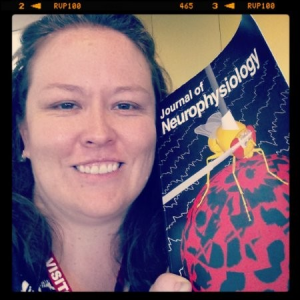Abstract:
Current microelectrode recordings have provided incredible insight into how the brain works, human cognition, and neural pathologies in the past 30 years, with clinical implications and uses (DBS and neuroprosthetics). The latest technologies, especially Neuropixels, have improved our spatial resolution, moving from >150 µm to 20-50 µm contact-to-contact spacing with improvements in customization. We hypothesize using high resolution recordings in human neurophysiology could provide novel and important insights into normal circuits, how those circuits participate in cognition and behavior, and how those circuits are impaired in pathology. I will discuss our efforts to bring these devices into the clinical space, what they might be starting to tell us about the human brain, and some future directions in uncovering answers and maybe even questions we didn’t know to ask without these devices.
Speaker Bio:
Angelique C Paulk currently works as an Instructor at the Department of Neurology, Massachusetts General Hospital (MGH) in Boston, Massachusetts carrying out research in neurophysiology, neuroscience, and behavior focused on understanding the neural underpinnings of behavior leading to treatments in neurological and neuropsychiatric disease. She did her undergraduate and Masters’ Thesis work at Cornell University, a Ph.D. at the University of Arizona, a first postdoctoral position at the Queensland Brain Institute in Australia, all working with bees and flies. At MGH, Dr. Paulk currently works with intracranial data to study neural and cognitive processing in the human brain recorded using intracranial electrodes, including investigating the mechanisms of how direct electrical stimulation alters neural processing and behavior and translating novel brain recording devices into clinical spaces.
